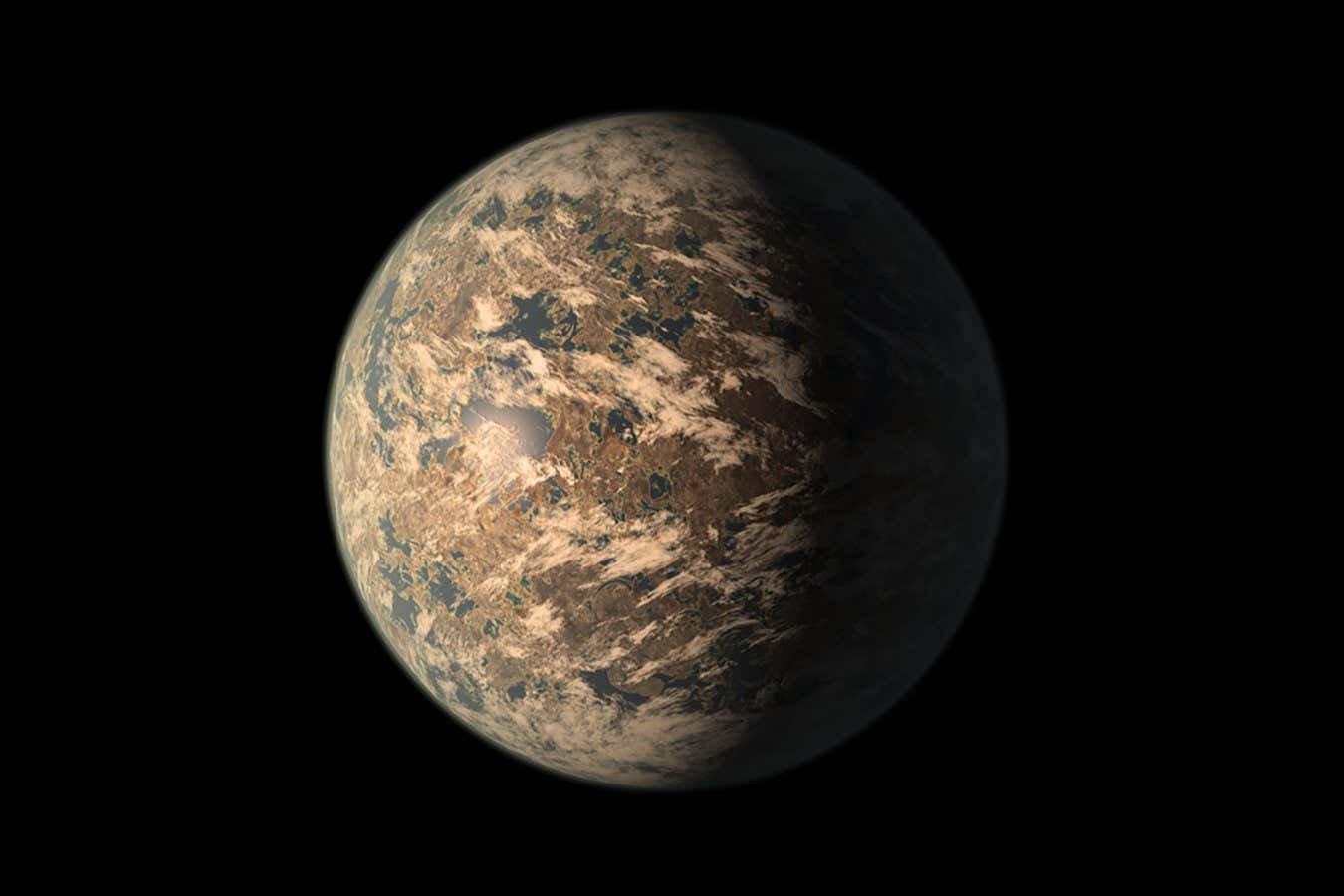Artist’s impression of the planet TRAPPIST-1e
NASA/JPL-Caltech
There are promising signs that one of the planets in the TRAPPIST-1 star system, which lies about 40 light years from Earth, has an atmosphere capable of supporting life. But scientists will need to image it 15 times more to make sure.
TRAPPIST-1 is a small red dwarf star with at least seven planets. It was discovered in 2016 and immediately became a target for astronomers hoping to detect extraterrestrial life because three of its planets lie within the so-called Goldilocks zone where water remains liquid.
Ryan MacDonald at the University of St Andrews, UK, says TRAPPIST-1 caused a huge amount of excitement among astronomers after its discovery. However, subsequent imaging of three of its exoplanets, including two of the three within the Goldilocks zone, left the field disappointed when no atmosphere was detected around any of them. But he and colleagues have long been focused on TRAPPIST-1e, right in the middle of the Goldilocks zone, and now believe they have reason for optimism.
MacDonald and his colleagues used the James Webb Space Telescope to scan TRAPPIST-1e in 2023 and have been working since then to extract a better picture of the world. Astronomers gather information on whether a distant exoplanet has an atmosphere by capturing images of the world as it passes in front of its star. Analysing subtle alterations to the starlight can reveal which chemicals are present in any atmosphere – and whether they include those that may be conducive to life.
But because TRAPPIST-1 is a red dwarf, it is much cooler than our own sun, making the readings more complex. For instance, chemicals like water that could indicate a hospitable atmosphere might actually be present in the star itself, meaning that signatures from TRAPPIST-1e’s atmosphere had to be disentangled from those of the TRAPPIST-1 starlight that was shining through it. This demanded new models and years of work. The preliminary results are now in and they suggest TRAPPIST-1e has a life-friendly atmosphere, potentially marking a significant moment in the search for habitable conditions for life beyond Earth.
“It does look like there are some bumps and wiggles in the data that, based on our atmospheric modelling, are well fit by a nitrogen-rich atmosphere, and potentially with molecules like methane,” says MacDonald. “Of all the spectra we have obtained so far of the planets in the TRAPPIST-1 system, this is the one that’s the most promising, that’s pointing towards there potentially being something there. Obviously, I’m hoping that the planet right in the middle of the habitable zone of this star has an atmosphere, because that would have incredible implications for astrobiology, our search for life and habitability.”
MacDonald says that if the presence of a nitrogen-rich atmosphere is confirmed with subsequent data, the next step would be to look for gases like methane or carbon dioxide and work out using climate models what the temperature at the surface is likely to be and whether that would allow for liquid water – something that would raise the chances of the planet being capable of hosting life.
But the researchers stress that the data and models at this point cannot completely rule out that TRAPPIST-1e is a bare rock – more data is needed. So far, they have data from four JWST observations, but over the next near, they hope to carry out 15 more. “We need to shrink the error bars,” says MacDonald.
Matthew Genge at Imperial College London says there is no shortage of exoplanets being discovered, but that astronomers are keen to find any that have the right conditions for life.
“The real complexity is you could be the right distance from the sun, but if you’ve got the wrong atmosphere, you can be a hot hellhole like Venus or you can be a freezing cold Mars,” says Genge. “Astronomers are looking at so many different exoplanets and, sooner or later, we’re going to come across one with a nitrogen/oxygen-rich atmosphere. And probably the only way you can get an oxygen-rich atmosphere is with plants, is with photosynthesis.”
“If [TRAPPIST-1e] is habitable, just imagine what’s gone on on that planet for the last 7.6 billion years,” says Genge. “The older the planet is, then the more likely that I would say it is for intelligence to actually evolve.”
MacDonald believes that, by 2060, we are likely to have discovered several planets where the data is hard to explain without life – but that this is a long way from proving the existence of extraterrestrial life. “We’re a sceptical bunch,” he says.







